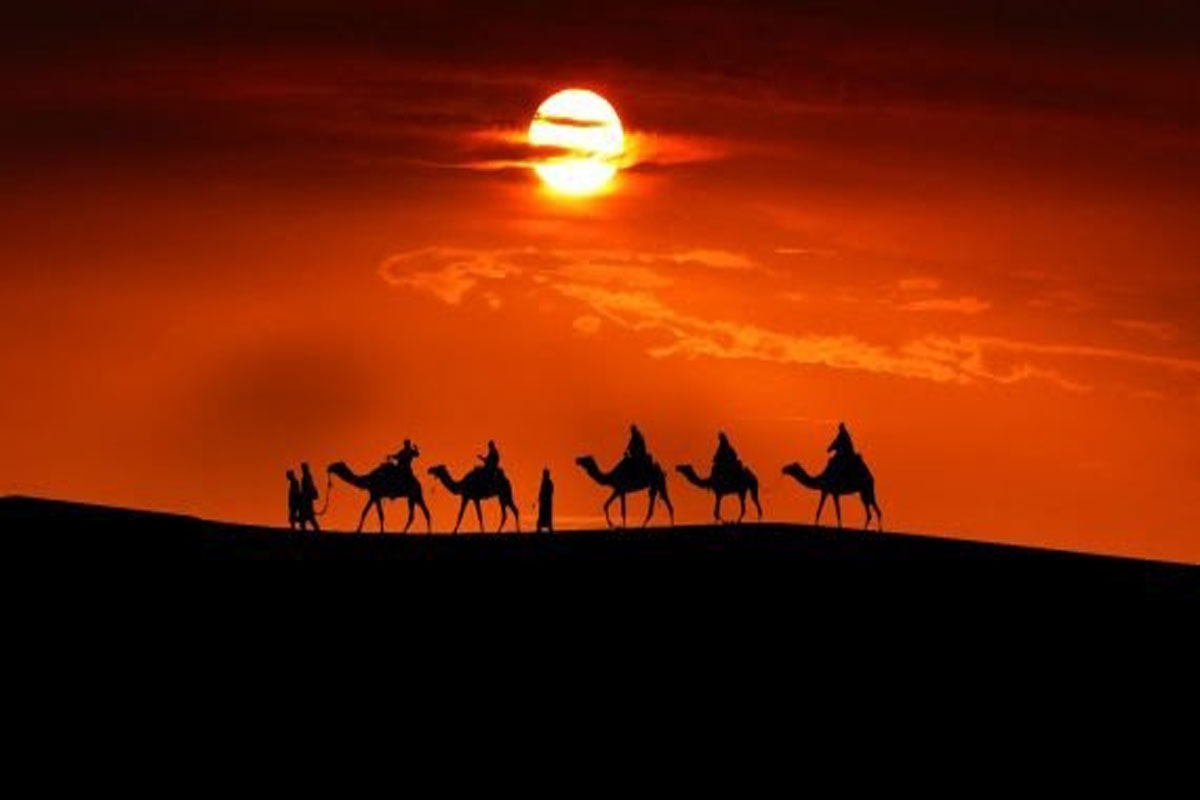
Ancient Depiction of Camel Hybrids Found in an Iraqi Temple
Jocelyne LeBlanc January 28, 2022
Archaeologists discovered ancient artwork of camel hybrids while restoring the Temple of Allat in Hatra, Iraq. The artwork was found on a horizontal piece of stone called a frieze that was located above a door in the temple which dates back to the 2nd century AD. It is believed that the stone piece was added to the temple in the year 168 AD during renovations by King Sanatruq I and his son Abdsamiya.
It was initially thought that the artwork represented eight dromedaries (an Arabian camel with one hump that was used for racing and/or riding) with two Bactrian camels (these animals came from Central Asia and had two humps) in the middle of the stone piece. The kingdom of Hatra imported the Bactrian camels from Central Asia to breed them.
However, upon further analysis of the stone piece, it appeared as though the artwork instead showed a hybrid cross between two camel breeds – a Bactrian camel and a dromedary. Furthermore, instead of having a space between the two humps, there was only a small indentation which is consistent with a hybrid.
 Interestingly, people have been breeding camels since the 1st century AD. This is based on the oldest hybrid camel remains that date back to the Roman and Parthian Empires. As for why they created camel hybrids, the animals were actually much stronger and more resilient. For example, they could carry twice the amount of weight than a dromedary and support over double the load of a Bactrian camel.
Interestingly, people have been breeding camels since the 1st century AD. This is based on the oldest hybrid camel remains that date back to the Roman and Parthian Empires. As for why they created camel hybrids, the animals were actually much stronger and more resilient. For example, they could carry twice the amount of weight than a dromedary and support over double the load of a Bactrian camel.
Massimo Vidale, who is an associate professor at the Università degli Studi di Padova in Italy, discussed the significance of the artwork found in Hatra by saying, “The image appears to express a precise message — the direct involvement of the king in camel herding, management and hybridization practices.”
It is believed that the camels were probably considered sacred as shown in the stone piece as well as other artwork found in the temple that depicted the goddess Allat riding side-saddle to the animals. “The construction of the Temple of Allat seems to be a bold move by King Sanatruq I, importing Allat — one of the most important pre-Islamic Arab deities,” Vidale added.
 The researchers of the study noted that the king may have been a part of “…the management of the long-distance caravans of an ancient Silk Road that could expand the trade interests that made Hatra so rich.” “The camels of the king, after all, are always the best.” (Their study was published in the journal Antiquity.)
The researchers of the study noted that the king may have been a part of “…the management of the long-distance caravans of an ancient Silk Road that could expand the trade interests that made Hatra so rich.” “The camels of the king, after all, are always the best.” (Their study was published in the journal Antiquity.)
The fact that they bred those camels showed that they didn’t have to rely on any other kingdom as Vidale explained, “By appealing to Arab groups, the king made a serious step in the process of detaching Hatra from the shadow of the Parthian empire.”
Pictures of the camel hybrid artwork can be seen here.https://edition.cnn.com/2022/01/25/world/ancient-hybrid-camels-scn/index.html
MU*























